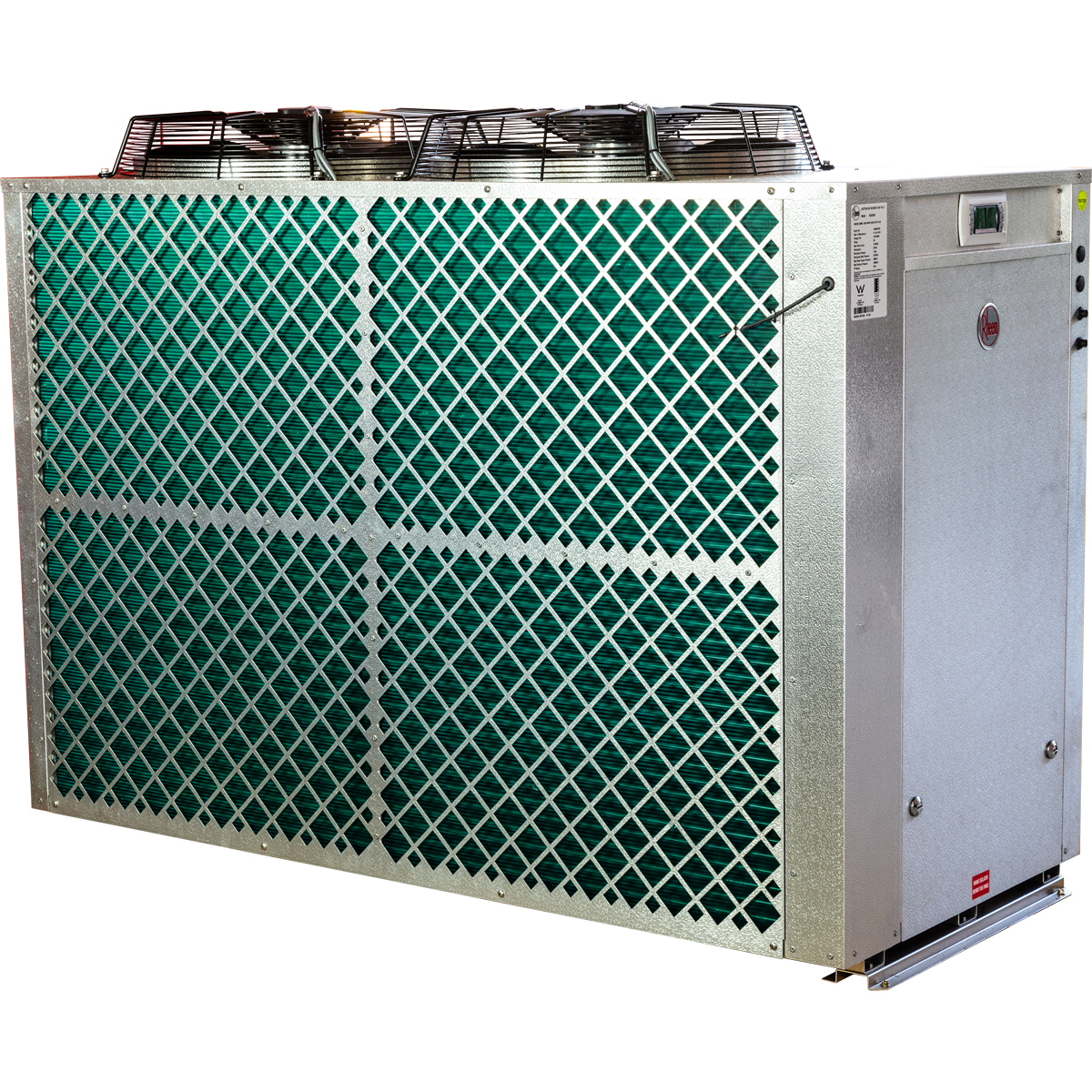I am often asked by executive committee members of residential strata buildings and strata managers to upgrade their existing gas hot water plant room’s to a system that operates with just electricity, usually air sourced heat pumps.
I have written this blog post to help explain the pathway for moving from gas to electric hot water systems in Canberra Strata Buildings and to explain some of the complications that need to be resolved on the way.
Existing Individual Unit Billing Infrastructure
Residents are currently billed by measuring the hot water consumption in litres using hot water meters, normally installed inside each unit, and owned by Jemina, the gas infrastructure company. Jemina has a contract in place that allows them to pay off their investment in the assets installed on this site over a period of time. When moving away from gas, to get out of this contract a fee, normally per unit, will be required to Jemina. As advised to me by a consultant who is leading the way in this space, a ballpark figure for this would be between $800 to $1000 per unit.
New Electric Hot Water Billing for Residents
Once you have gotten out of your Jemina contract, the complex has 2 options.
Self Managed Billing – Option 1
For the Owners Corporation to accept all ongoing Hot Water running costs and then build this cost into the Strata Fee. This is generally less desirable as hot water is normally the largest energy cost within a home and it can vary dramatically based on the unit owner’s usage and the number of residents living in the apartment.
Embedded Network – Option 2
Engage an Embedded network who is willing to take on the billing. For this to occur, due to legislation that enforces freedom of choice with our energy suppliers, all Residents, including tenants and owners, must sign a document that they are willing to go to an embedded network. The process takes approximately 6 months and if a unit changes resident/tenant in this period, the paperwork basically needs to start again.
Providing all residents do sign the agreement, the embedded network would have their own billing infrastructure installed and residents would then be billed in a similar way to the existing arrangement, where each resident would have their own energy account. The cost for the embedded networks billing infrastructure, such as water meters and meter readers, would be billed to the residents via the contract either directly in a lump sum when they take on the project or over a period of time within their charges.
Note 1 – This 6 month paperwork complication that can be easily overturned makes the prospect far less appealing to the embedded networks as they can waste a lot of time and energy on a project that never proceeds and as a result, many of the leading embedded networks, including Origin Energy, will not take this on. This reduce’s the competitive nature of who might want the contract for this work.
Note 2 – Many Gas embedded network contracts include the supply and maintenance of the hot water plant equipment. This arrangement is called “Serviced Hot Water”. To the best of my knowledge, at the time of writing this, no embedded network is willing to take on a similar arrangement with Electrical hot water options as the initial capital cost and ongoing maintenance costs are considerably higher than that of gas equipment. Estimated to me to be 4 times the cost by 1 of the leading embedded networks that provides services in the ACT. This means that a complex moving to this type of embedded network contract will be on a “Bulk Hot Water” arrangement, where energy billing is taken on by the network and all maintenance and infrastructure costs are worn by the complex.
Plant Location
Electric hot water infrastructure, such as Heat Pumps, requires significantly more space for plant and equipment to be installed. One of the reasons for this is their recovery rate, the speed at which they can heat the water, is far slower, so as a result they need to be able to heat the water over a long period of time and then store it in large hot water tanks so that you don’t run out of water during peak demand times.
This often means that existing hot water plant rooms are not suitable for the new hot water infrastructure as they are to small.
Roof Top Plant Rooms
Many gas hot water plant rooms have been installed on the roof-top’s of buildings. As this equipment is extremely light, often without any stored hot water. Generally, rooftops have not been designed in a manner suitable for the significant weight of the stored hot water and heat pump infrastructure which is required for conversion from gas to electrical equipment. As a result, in most cases, these plant rooms will need to be relocated to the basement car park or other common area, requiring significant pipework alterations, hydraulic design and space in the basement.
As a general rule of thumb, electric heat pump hot water plant rooms require 3 to 4 times the footprint space of their gas counterparts.
Electrical Supply
The next key step in moving a strata complex to a fully electric hot water system is to consider the demand the new hot water equipment will put on your existing electrical system. In most cases, given hot water is the/one of the largest energy consumers in your building, the answer will be not without upgrading your incoming supply.
Pending on your building size/power requirements, and suburb infrastructure, many installations will even require upgrading the mains infrastructure to your street/suburb. This problem is multiplied if you are in an area with other buildings of similar nature and when future EV charging considerations are taken into consideration.
How can this be so complicated?
Many EC members ask me how there can be so many complex problems when everything they hear in the media is “fossil fuel gas will be turned off by 2045”.
The truth is, the ACT Government did not include residential unit buildings in its 100% electrification of Canberra modelling. Given we have one of the highest unit dwelling ratios in Australia, this oversight is causing, for many complexes that require hot water plant upgrades, unexpected delays and frustration.
Where to from here?
If your hot water plant and equipment require repair/replacement, I believe there are only two reasonable options currently available.
Option 1 – Conduct an initial assessment
If your owner’s corporation is progressive and willing to help lead the way in the ACT, the next step is to engage (preferably) Water Tight Canberra to work with you and our trusted Energy Consultant and together we will prepare a detailed report that addresses all of the above items, conduct a tender process with embedded networks, review all commercial decisions and more.
Our aim will be to get to a point where you have a detailed cost estimate or documents that you can go to tender with along with a recommendation for embedded network provider.
Whilst I am more than happy to have an initial conversation with the EC for free, a realistic estimate cost for this initial assessment would be between $15000 and $20000, however, this will be quoted on a case by case basis.
A rough estimate for the Hot Water Plant equipment itself, supply and installation, is 3 to 4 times the cost of a high-efficiency gas system. This estimate excludes the cost of resolving the billing contract with Jemina and installation of a new billing system, consultants, major electrical upgrades etc.
Alot of this difference in price may be recovered in reduced running costs over the life of the new plant and equipment.
Option 2 – Watch this Space
The second option would be to replace your aged infrastructure with a new high-efficiency gas system whilst keeping an eye on the exciting developments in this space.
A good quality, highly efficient, commercial hot water plant will generally run for 7 to 10 years with only basic maintenance/servicing, after this point repairs can become increasingly expensive and breakdowns can occur more frequently.
New highly efficient gas commercial hot water plants run 15% more efficient than most existing plants. This means a far lower carbon footprint and a cost saving to all residents with the reduced energy consumption
Water Tight Canberra specialises in hot water plant room upgrades. If you would like a condition report and quotation for a plant room upgrade, please get in touch.
The Future of Hot Water
Aside from the most likely scenario which is the ACT Government will provide unit complexes with rebates to move away from gas once the pathway has been paved, for a self-confessed plumbing geek like me, I believe the next 7 to 10 years are without a doubt going to be exciting times in the renewable hot water space. All of the items below are existing technologies that are being explored in Canberra and Australia
- Water to Water Heat Pumps – extract heat from the sewer and use it to heat your water) significantly more efficient than air heat pumps
- Advancement in Air Heatpump Technology- increasing recovery rates whilst reducing footprint size
- Geothermal – Drilling very deep into the earth to extract heat
- Green Hydrogen – advancements in hydrogen generation could see the cost of production reduced to a point it could be a viable alternative fuel
- Bio-Methane – created by decomposing organic matter and captured at compost fogo tips, normal tips, sewer plants, pig farms, etc is an existing 100% green gas that can be used with all existing gas appliances and infrastructure
Authors Note
I am passionate about Hot Water in Strata buildings and am lucky enough to be at the forefront of the industry by way of sitting on both the Master Plumbers ACT Association board and Strata Community Association ACT’s executive committee. I have been lucky enough to sit in on meetings with the ACT Green’s Minister, Shane Rattenbury, and have spent considerable time researching and talking to manufacturers, engineers, hydraulic consultants, embedded networks and energy consultants.
The space of commercial hot water in residential buildings will continue to change regularly and we will do our best to keep this blog up to date.
If any reader of this blog feels that any part of it is out of date or incorrect, I encourage you to reach out to us via our contact form so that we can investigate and update it as required.






